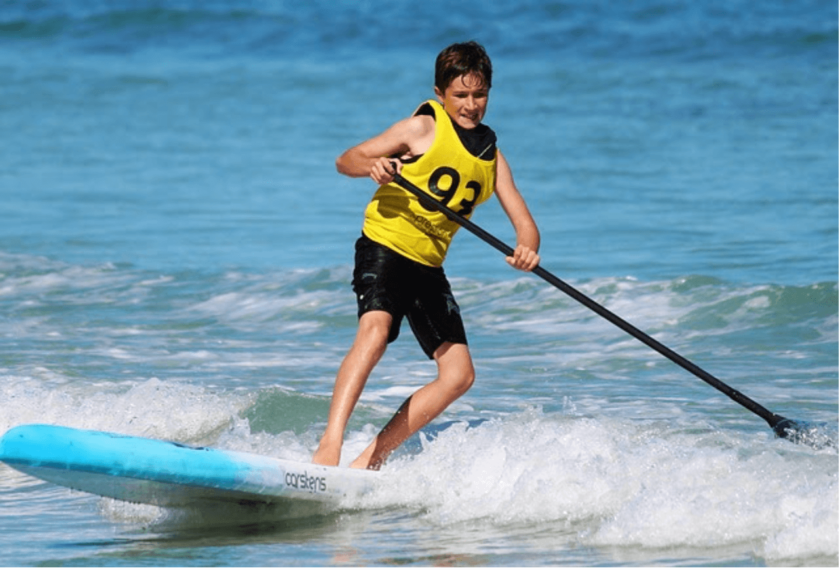If you love paddleboarding and cannot wait to buy your first board, you must learn a few maintenance and care tips to enhance its durability and performance. When you take proper care of your paddleboard, it can stay with you for at least 5 to 7 years. Simply keeping your board away from rocks when paddling on the water is not enough; there are several maintenance tips you should consider. Take a look at these paddleboard care and maintenance tips to prolong its life.

1. Prevent Corrosion
Since paddleboards are made of multiple metallic parts, they can easily corrode when exposed to water for a prolonged period. Lubricating the metal parts once a while can help prevent rust formation and make it last longer. Apply a lubricant like WD-40 or any other household oil on the metal parts of the paddleboard, namely the leash cup bars, the fin box, the fin hardware, and other parts. While the metal used in making paddleboards is marine-grade stainless steel that prevents rust formation, lubrication can enhance maintenance during harsh weathers and poor water conditions. Galvanic corrosion can also occur when stainless steel and non-stainless steel come in contact, which can be prevented with lubrication.
2. Be Wary of the Surroundings
Make sure that the place you store your paddleboard is kept away from sharp objects and harmful substances as they can damage your paddleboard. Even though it seems like a simple maintenance tip, many paddleboard owners end up paying a lot of money to get them repaired just because they weren’t careful of their surroundings. If the fin is installed on the board, it shouldn’t be jumped on either as it is prone to breakage. When your paddleboard is on land, keep it away from rocks, docks, and other hard and sharp objects.
3. Learn the Right Way to Clean it
To clean a SUP or a Stand-up Paddleboard, use fresh water and a mild detergent to avoid damaging its surface. Delicate parts like the deck pad, slider nuts, and fin boxes are often dirtier and harder to reach, which is why you must pay extra attention to them. Sand, dirt, and grit are easily trapped within these parts. Use a soft cloth to wipe the surface of your paddleboard with constant back-and-forth movements. Do not scrub harshly and keep your hand gentle as it can ruin the surface of the paddleboard. If you own an inflatable paddleboard, read more here to gain more insights into its maintenance requirements. Just like you would with SUPs, avoid using salty or dirty water when cleaning your inflatable paddleboard.

4. Store it with Care
The way you store your paddleboard will also determine how long it will last. The place you store your paddleboard should not experience temperature fluctuations either. Since most people simply dump their paddleboards in their garage, which often experiences temperature fluctuations, they notice their boards getting delaminated. Since paddleboards are constructed with sandwich layers of EPS (Expanded Polystyrene) foam core and fiberglass, they are prone to delamination when exposed to heat and then sudden cold. If you lay your board on a sharp or heavy object, it can also develop pressure dings.
5. Get a Board Bag
Invest in a paddleboard storage bag, especially if you use your paddleboard once every few months. A board bag protects the paddleboard from wearing and extremely harsh conditions. Since most boards are damaged due to improper storage and handling rather than when using on water, getting a board bag is the simplest and most effective solution to protect your board for a prolonged period. Board bags are made of durable material and are padded with layers of foam, which provides optimum protection. It can easily withstand pressure from sharp and heavy objects, thereby protecting your board from dents and dings.
6. Use Cinch Traps and a Leash
Maintaining your paddleboard when storing is crucial, so is looking after it when you are tying it up during transportation over your car and placing it on water. Use at least 2” wide cinch traps to tie your board over the car and secure them tightly. Using a leash on the water can keep sharp rocks and objects away from your board and prevent your paddleboard from breaking. To increase drag, use a 10’ coiled leash. Buy one with reinforced components as it is stronger and provides more protection. You can easily find cinch traps and leashes for paddleboards online.
Paddleboards can be an expensive investment, which is why maintaining them is of the utmost importance. With these care and maintenance tips, you can enjoy your thrilling experiences on the water with your paddleboard for years to come. Proper maintenance ensures that your board looks brand new and performs more efficiently for as long as possible.

